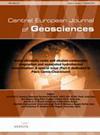Neuro-fuzzy reaping of shear wave velocity correlations derived by hybrid genetic algorithm-pattern search technique
引用次数: 12
Abstract
Shear wave velocity is a critical physical property of rock, which provides significant data for geomechanical and geophysical studies. This study proposes a multi-step strategy to construct a model estimating shear wave velocity from conventional well log data. During the first stage, three correlation structures, including power law, exponential, and trigonometric were designed to formulate conventional well log data into shear wave velocity. Then, a Genetic Algorithm-Pattern Search tool was used to find the optimal coefficients of these correlations. Due to the different natures of these correlations, they might overestimate/underestimate in some regions relative to each other. Therefore, a neuro-fuzzy algorithm is employed to combine results of intelligently derived formulas. Neuro-fuzzy technique can compensate the effect of overestimation/underestimation to some extent, through the use of fuzzy rules. One set of data points was used for constructing the model and another set of unseen data points was employed to assess the reliability of the propounded model. Results have shown that the hybrid genetic algorithm-pattern search technique is a robust tool for finding the most appropriate form of correlations, which are meant to estimate shear wave velocity. Furthermore, neuro-fuzzy combination of derived correlations was capable of improving the accuracy of the final prediction significantly.基于混合遗传算法模式搜索技术的横波速度关联的神经模糊收获
横波速度是岩石的重要物理性质,为地质力学和地球物理研究提供了重要的数据。本文提出了利用常规测井资料建立横波速度估算模型的多步骤策略。在第一阶段,设计了三种相关结构,包括幂律、指数和三角函数,将常规测井数据转化为横波速度。然后,使用遗传算法模式搜索工具找到这些相关性的最优系数。由于这些相关性的不同性质,它们在某些地区可能会高估或低估彼此。因此,采用神经模糊算法对智能推导公式的结果进行组合。神经模糊技术通过模糊规则的使用,可以在一定程度上弥补高估/低估的影响。一组数据点用于构建模型,另一组未见数据点用于评估所提出模型的可靠性。结果表明,混合遗传算法模式搜索技术是一种强大的工具,用于寻找最合适的相关性形式,这意味着估计横波速度。此外,神经模糊组合的推导相关性能够显著提高最终预测的准确性。
本文章由计算机程序翻译,如有差异,请以英文原文为准。
求助全文
约1分钟内获得全文
求助全文
来源期刊

Central European Journal of Geosciences
GEOSCIENCES, MULTIDISCIPLINARY-
自引率
0.00%
发文量
0
审稿时长
>12 weeks
 求助内容:
求助内容: 应助结果提醒方式:
应助结果提醒方式:


